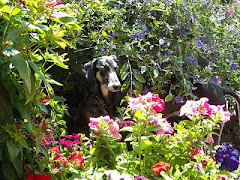Peter Jackson’s new film, “The Hobbit, Part I,” is another
perfect example of why you should never give a successful filmmaker unlimited
money and hand him a project that’s “dear to his heart” without having a
gimlet-eyed, ruthless Editor with the unlimited Power of the Scissors standing
nearby.
Successful filmmakers with unlimited money almost always
succumb to the dreaded malady of Rococoization: the mistaken belief that if one
is good, twenty-five will be better. No.
It’s not. But turning everything Rococo is a common affliction. Even
George Lucas was not immune.
The first problem with the Hobbit, Part I is the fact that
it is a Part I. “Lord of the Rings, the
book, was a complex story told in three volumes. “Lord of the Rings,” the movie, was a complex
story told in three films. “The Hobbit,”
the book, was a modest quest adventure story told in one volume. “The Hobbit,” the movie, is three, three-hour
films. You see the problem? Yes.
How do you spell, P A D D I N G.
Even stranger for a filmmaker as skilled as Jackson,
whole chunks of “The Hobbit” are told with endless scenes of yak-yakking,
blah-blah-blah, exposition and ‘splaining, with actors sounding like they’re
reading off huge descriptive chunks from the book. In a film, you don’t
‘splain, you show. And you hold the
unnecessary details to the minimum needed for coherence. The audience
doesn’t need to know the endless begats
and begins and backstory; you only need to babble a bit about the Great Knights
of the Nodding Trees, then get on with it.
You’re not reading a book to the audience, you’re making a moving picture with
the key word here being . . . moving.
(To see how it’s done, go watch the original “Star Wars.”)
As for the movie being suitable for kids? No.
Instead of a clean, exciting quest adventure with exciting-scary orcs
and trolls, a movie that would be suitable for kids (which is who Tolkein was
writing “The Hobbit” for in the first place – his children ), Jackson, typical
of modern fantasy filmmakers, has loaded up the screen with head-ripping
violence, drooling, snot-dripping grotesqueries with every wart and wattle
rendered in greatest detail, with camera-focus zeroing in on every dripping
tongue, salvia-drenched tooth, and, of course, overwrought battle scenes that
simply turn into visual chaos – can’t tell the dwarves from the orcs and after
a few minutes, who cares? Which is
another result of Rococoization – when you fill every square inch of the screen
with squirming images, instead of exciting action, you end up with a visually
static frieze.
Oddly, the use of 3-D did force Jackson
to create one visually exciting scene that was a duplication of the ore car,
roller-coaster ride in one of the Indiana Jones films – our heroes running and
leaping and zooming through the orc’s huge caverns. The necessity to take advantage of the 3-D
effects forced Jackson to zero in
on focused movement to track the characters, all of which helped create a
hierarchy of movement and point of view.
In short, the movie was a bloated mess. And instead of using pruning shears – Edit!
Edit! Edit!—Jackson just kept adding endless scenes that looked like outtakes
from the “Lord” trilogy – repeated infill shot from a zooming helicopter of our hearty little troop of heroes scampering
over hill and dale, utterly dwarfed by the rugged New Zeeland landscape. Up loud heroic music. Oy!
But all was not completely lost. The price of admission was partially redeemed
by the scene where Bilbo meets Gollum (and his “precioussss” ring of power). It’s brilliantly realized, thanks to Andy
Serkis and his extraordinary acting abilities.
Andy, wearing his motion-capture suit and face camera, has managed to
create an extraordinary character and deliver an amazingly moving performance. Gollum, pitiable, dangerous, heartbreaking, funny
is one of the few characters in the film worth caring about. Thanks to Serkis, he’s the most real fake character on the screen. That kind
of extraordinary performance was first delivered by Serkis in the “Lord” trilogy, as well as his
astonishing turn as the lead ape in “Rise of the Planet of the Apes,” and now
“The Hobbit.” Reason enough to hope that
the stodgy Academy will finally understand that those performances weren’t
“animation,” they were acting, and will
give Serkis his much deserved Academy Award for best supporting actor.
Like another waterboarding session, parts II and III will
lumber into town for the next two years to inflict their torture on the
returning fans (and extract every last precioussss nickel from their
pocketsessss.) I suspect I may
reluctantly drag myself to the theatre if only to see what Jackson
has done with Smaug, the dragon. Knowing the wretched excesses he’s ladled on
the orcs, I’m not heartened. But Gollum
will surely creep back into the remaining films and those scenes will be worth
sitting through all the rest.





























